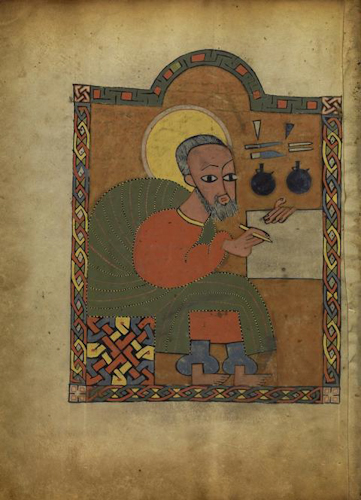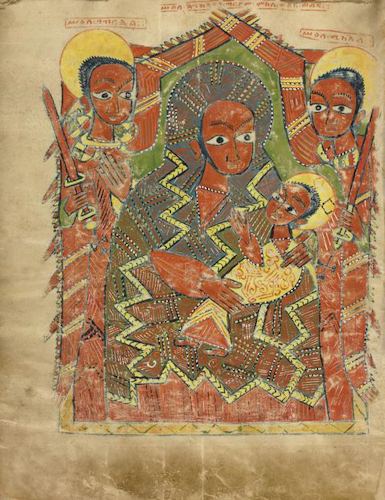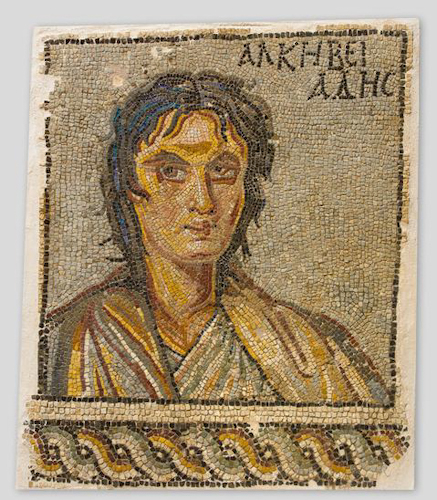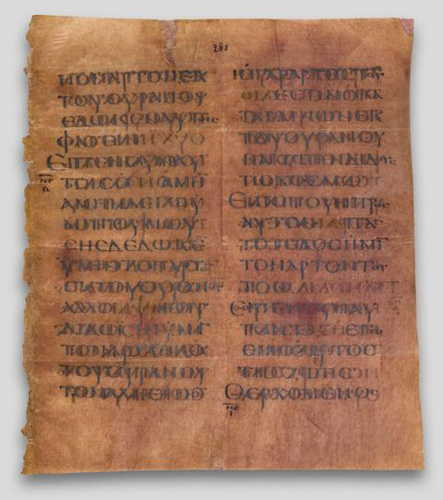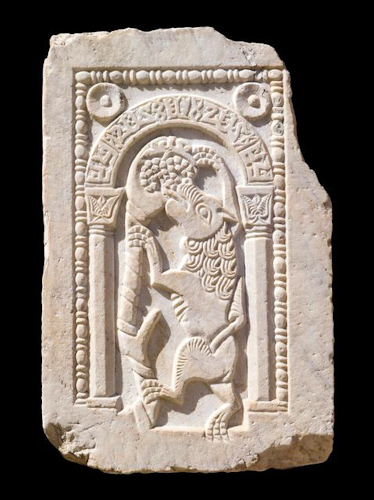Heaven And Earth: Art of Byzantium from Greek Collections
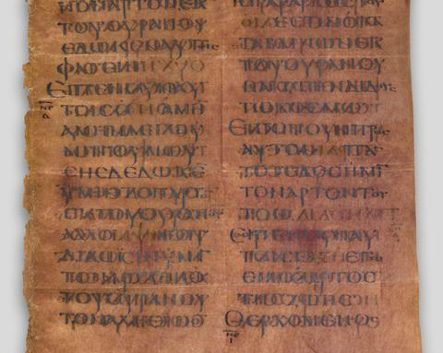
At the Getty Villa:
“Heaven and Earth” Exhibit is “Heaven on Earth” for the Viewer
“Heaven and Earth,” at the Getty Villa in Malibu, is a truly remarkable exhibition exploring artistic and cultural aspects of the Byzantine Empire, based on objects accumulated from Greek collections. This, however, is more than an exhibit — it is an exultation!
On display for the viewer are close to 170 artworks, among which are mosaics, icons, frescoes, sculptures, manuscripts, metalwork, jewelry, glass, embroideries, and ceramics, literally covering every facet of artistic expression from that place for that time. Over thirty Greek collections contributed works to make this paean to the period possible.
“The importance of this exhibition cannot be overestimated, bringing many of the most important surviving works of Byzantine art to Los Angeles, following their critically acclaimed presentation in Washington D.C. This exhibition will, of course, have special meaning to the Greek community of Southern California, but all visitors will be dazzled by the splendor and the opulence of Byzantine art, and cannot but be affected by its spiritual power, which permeated the Christian world for a millennium, ” says Timothy Potts, Director of the J. Paul Getty Museum. Indeed! These reviewers echo those sentiments; we feel viewers of this exhibit are in for a real delight.
Dr. Maria Andreadaki-Vlazake, Director General of Antiquities and Cultural Heritage at the Hellenic Ministry of Culture and Sports states, “This cultural endeavor is of particular importance for Greece….This exhibition gives us the opportunity to promote for the first time the intellectual and artistic achievements of Byzantine Greece in the USA.” Indeed, again! These reviewers did not expect to encounter such resplendence and creative skill from this early period and were most pleasantly surprised by these artifacts.
First, let’s recount a little history as background for this exhibit. Byzantium, an ancient Greek city, was selected by the Roman Emperor Constantine, a Christian, as the center of the Roman Empire in A.D. 330 and the city was re-named Constantinople (current day Istanbul). Constantine and his successors held sway for a millennium before falling to the Ottoman Turks in A.D. 1453. The exhibit traces the evolution of Byzantine art up to 1453, as a result of first Greco-Roman, then Christian, and then cosmopolitan influences.
At first, mythological themes permeate the artworks, confirming the ongoing influence of Greek education and culture. Then, the classic merges with the current, and prevailing Christian motifs infuse the icons which serve as ongoing points of concentration for the devoted. Artists and craftsman continue to develop and innovate as other outside cultures cast their cosmopolitan spell during last centuries of the Constantinian millennium. The viewer can actually trace the evolution of Byzantine art as he or she traverses the exhibit.
Some of the most interesting artworks in this collection are:
Archangel Michael: icon from the first half of the 14th century; tempera on wood, gold leaf
Christ as Orpheus: statue from the 4th century; marble
Virgin Episkepsis and Child: mosaic icon from the late 13th century; glass and gold tesserae on wood
Head of Aphrodite: statue from the 1st century; Parian marble
Necklace: from the 4th century; gold, precious stones
Bracelet: from the 9th-10th century; gold with granulated decoration and enamel
Wall decoration fragment: mosaic from the mid-5th century; gold and glass tesseraeThis grandiose exhibit at the Getty Villa runs from April 9th to August 25th, 2014. It should be noted that the Getty Center in Los Angeles displayed another part of this exhibit, “Heaven and Earth: Byzantine Illumination at the Cultural Crossroads,” which ran from March 25th to June 22nd, 2014 and featured magnificent illuminated manuscripts from the same period.


